For my weekly, I decided to reflect on the article "Conditions of Learning" and figure ways in which I could use these learning styles in a classroom so children will be able to be engaged and persevere even when there is a fear of being wrong. The article discussed the what needs to happen for the conditions such as immersing students in the environment and demonstrating the specific ways of doing a task. If students have strong expectations for themselves along with responsibilities that could provided through a teacher or parent, they will learn. Students need to be given the opportunity to learn and make mistakes because when they see what they did wrong, they are more likely to remember. Also through language, it is important for kids to get responses to hear and come to understand what they are doing correct or need to improve.
To use these conditions in a classroom, I would give my students many opportunities so they will learn effectively through whatever style of learning benefits them. In a classroom, I would try to allow my students to be immersed in what we are learning. For example, if we were doing a science lesson on the development of a beetle, I would put pictures up in the room and bring up the topic of discussion as many times as possible. Especially as a teacher, I would make sure to give students the condition of demonstration. With every lesson or math problem for example I would demonstrate the problem so they will be able to understand and I would show it in many ways so there is a greater possibility that it will "click" with students. I would try to use all of the conditions but would most of all try to encourage students so they know that if they try, they can do it.
As a teacher, I will try to implement these conditions in my classroom and relate to my students as I have also experienced these different conditions. For example, I learned to paint and do art very well due to my experience of being immersed in an artsy environment. In school, I have taken art classes from kindergarten to my senior year in high school, along with taking an IB class. At home, my mom was a teacher and always had arts and crafts around the house for me to explore and experiment with, which in combination all influenced my ability. By finding which conditions of learning work best for students, I need to encourage all forms of learning and use the conditions to allow students to engage.
Overall, I think that Kevin Cloninger's speech was a little different than what I expected in terms of where his speech started off and ended. I thought it was going to be more focused on how to promote the well being of students in a classroom but instead he discussed issues of well being in our society. I found some of his information useful to know about some problems that my future students could be facing which made me think of ways that I could help them and give students the opportunity to be happy and healthy. His speech did make me think outside of the box and realize the many purposes for education that people do not normally think of besides preparing students for future jobs but to create people to live well and can use that well being to better others. From his speech, I thought of several ways that I could use his discussion of well being and take it into a classroom. For example I think that kids will learn better and get more out of their education when they want to learn and many times this only happens when they have a good sense of wellbeing. To take this into a classroom, I would create some lesson plans that would allow students to think about their well being such as activities or projects where students could reflect and discuss their personal values and beliefs . This would help students to understand who they are as individuals and maybe learn the reasons why they are getting an education. I would also incorporate some forms of physical well being such as including education on nutrition and exercise. I think that it would be very good to use Kevin Cloninger's ideas of well being in a classroom as an educator because I have the responsibility to teach my students who will be our future leaders. By promoting well being of my students, it would create a positive environment which would in turn help students be more involved in their learning. I think that also by encouraging well being in the classroom, I could encourage a healthy lifestyle for the students and even their parents if they are aware of my teaching of well being. Also this would give me the opportunity to use creativity in a classroom to make lesson plans about well being other than basic subjects.
Overall, I think that math night went really well and my activity, the "Pattern Walk" worked really well with the grades that came. Even though there was not as much people who showed up as we thought, it almost worked better with my activity to have smaller groups because we could help the kids with the activity and their parents could play with them. We also had some kids who were younger than kindergarten who had difficulties following the game and walking around the square following the pattern, and realized that this game is good for specifically K through forth or fifth grade. I think that this math night helped me to develop skills as a future teacher to learn ways to explain things such as math and learn to change plans when things aren't working in a classroom. I noticed many differences from how the kids played this game at family math night to the fifth grade who we practiced on. The fifth graders could easily understand that the game was about patterns and they could repeat the pattern once they knew and saw it written on the whiteboard. On the other hand, at family math night, the kids had more difficulty following it and the young ones would sometimes get confused knowing which way to go around. Also I think that the game was way more interesting for kindergarteners through about 3rd grade because they had to really focus to repeat their patterns and count the number of spaces they walked. From this activity, I noticed many different things about student thinking. I saw that there were many students who caught on to the game very quickly. Others had to be physically shown what to do around the pattern square and some kids just had to follow what other kids or their parents were doing to catch on. Also I noticed that some kids thought about following the pattern differently by saying that they could just count the pattern going around the square in one direction. I saw that a lot of the kids understood that the purpose of our game was to follow a pattern as we explained to them and others just focused on counting the steps they took. By observing the ways the kids thought about my activity, I found many effective techniques of teaching that I could use in the classroom. For example, I found that it is very important when explaining something to repeat it many times. When you repeat it many times, it allows you to explain something in different ways that can click differently with different kids. In my activity I saw that the kids understood better when I explained a couple ways and also demonstrated. Also I found that as a teacher you have to improvise sometimes to make things work best in a classroom. In my game, we had to change some things because it wasn't working at first such as just telling the kids the pattern, we learned that they need to see it on a white board to be able to do it on their own.
Title: Pattern Walk
Objective: Patterns and counting
Materials:
-Numbered Carpet Squares (at least enough for each student)
-White Board and Marker
-"Winner Bag" with number cards #1-# of squares
-Pattern bag with number cards #1-#10
-CD player and age appropriate CDs
Set Up:
-Before students arrive, arrange carpet squares in numerical order, in the shape of a rectangle.
-Make sure each bag has correct numbers
-Prepare white board
Adaptions:
-For younger students, use smaller numbers and a two part pattern instead of three or four
-For the visually handicapped, lead the student around the squares, and make numbers on the cards bigger
Before Playing: Review with students the concept of patterns
How to Play:
-Start by having the students find a carpet square to stand on
-Next have one student draw a number from the "winner" bag and record it on the white board
-Now depending on the age, have 2-4 students draw a number from the pattern bag. These numbers will become the pattern movement. Example: Forward 2 backward 5.
-Record the pattern on the white board for the students to use as a reference.
-Play the music
-As the music plays, have the students walk around the carpet squares using the pattern
-Randomly stop the music and whoever is on the winning number, is the winner.
-Repeat the process to play more rounds. Be sure to draw new numbers each round.
-Have fun!
-If the students are having trouble, play with them
-Adapt the numbers for the pattern based on ages
For my weekly, I decided to focus on area and found many ways to do a single problem that will be very important in teaching kids because of their different forms of learning. First I worked on thinking of all the possible ways to see a shape and find area by figuring geometrical formulas and visually moving pieces of the shapes around. In a classroom, there is going to be many different learning styles and I need to be able to work with each one to teach math in a way that everyone learns to understand. I decided to work with the two shapes below to figure area and different ways to see and solve a single problem so I can use this technique in the classroom. To find the area of the triangle below, I would teach students to count the number of full squares inside the shape and find there to be 10 and then see that there are half squares. These five triangles add up to 2 and 1/2 squares or 2.5 which equals 12 and 1/2 or 12.5.
10+1/2+1/2+1/2+1/2+1/2= 12 and 1/2 10+.5+.5+.5+.5+.5= 12.5
Area could also be found using the geometry formula for a triangle, A=1/2bh or Area=1/2base x height. To solve this you would count the base which is five across and the height which is also five and plug them into the formula.
A=1/2(5)x(5) A= 1/2 x 25 A= 12.5 or 12 and 1/2
To find the area of the parallelogram, I solved it similar to the triangle by counting the amount which is 30 whole squares in the middle. Then figure if you cut off the triangles on each side and add them together it forms a rectangle that is 3 x 5 which has an area of 15, (A=bh) and then you would add it to 30 to equal 45. The area could also be done the same way by using the formula of A=1/2bh on each side triangle. To compare the methods used to find the area of the two shapes, I found that to work with any shapes you can use a mathematical formula, or just visually count squares. Some kids may find it easier visually, to put the half squares to together and then count the total area and others work better with the area formulas. In a classroom, I think that it is so important to teach concepts in many different ways because it is difficult to make math click with every student. By using different methods, kids can learn in their own style and it is good to provide different ways to approach a math problem so kids can form new ways of thinking. By forming those skills, students can use the abilities in math problems throughout their lives.
For my weekly work, I decided to work on improving my family math night activity and think of ideas that could make it a better game for many different math abilities. For my game, my partner and I created a "cake walk" number game where kids have to follow patterns by walking around a circle with numbered squares. The kids had to pull a winning number from a hat to see which square would be the winning spot when music is played and stopped. Then the kids had to pick other numbers from a hat depending on the grade level and follow the pattern of numbers by going back and forth around the circle following the numbers that were drawn. I found out which parts of the game were fun for kids, which need improving, and how to reinforce the math concept of patterns. The idea of my activity was to work with patterns using numbers and help kids to work with addition and subtraction with a game that uses motion to learn. For the younger kids we will do simple patterns such as two or three numbers but the older kids will do more. To incorporate math into the game for older kids I noticed and will use the idea that as kids moved forward and back, they move forward or back a certain net amount. For example if they moved forward seven and back five they will be moving up two spaces each time they repeat the pattern. This can also be calculate if there are three or more numbers added to the pattern and kids see this math at the end of each pattern.
Example: 7 forward + 5 backward = total two spaces forward
6 forward + 4 backward + 3 forward= total five spaces forward
4 forward + 7 backward + 2 forward + 3 backward= total four spaces backward Overall I think that my math activity went very well because the kids said that they enjoyed the game and wanted to keep playing. I found that it was hard for them understand the whole concept at first and we had to demonstrate and participate in the cake walk with them at first until they understood. Also it was appropriate for their age and will be for the younger ones as well. When we asked them for feedback all of the groups said that we should make the number patterns smaller for younger kids because it was challenging to follow large patterns. To improve this math game, I came up some ideas that would make the game run more smoothly and help incorporate more patterns. First of all I think by having a white board to write the number patterns down would help kids to visually see the patterns and follow them more easily on their own. Also I think that adding more numbers to the squares would be beneficial because there were blank square between numbered ones and sometimes there was two winners because a winning number was in between two kids. I think that this activity is very successful in making math patterns fun and the students feedback has greatly helped to improve it.
For my weekly work, I decided to work on gathering data and using that to find the mean, median, and mode of a set of numbers. I found examples of graphs that could be used in a classroom that would help visually display data to be able to easily figure out math problems from. By collecting data in the form or charts or graphs, information can be easily understood rather than just listing numbers from the results. To incorporate gathering data into a math classroom, there are many ways to create activities that students could do to collect amounts of data and display the results in bar graphs, line graphs, or pie charts. In a lesson
plan, I would first teach the students the different ways to display data by showing them how to make the different the graphs. I found a website called “create a graph,” that would be a very useful thing to introduce to students so they would be able to use technology rather than drawing by hand. This would be more for the upper elementary students but would be an effective way to create an understanding of data collection and math.
Mean: 5+3+7+9+5+2= 31 31/ 6= 5.16 rounded= 5 =5
Median: 31/ 2= 15.5 = 16 strawberry
Mode: Strawberry
occurs the most
The information from the graph above could be an example of how to find the mean, median, and mode in a classroom. This would be a good activity because the students would relate because they would be picking their favorite fruit and solving math from gathered data. The mean of this data was found by
adding all of the fruit amounts and then dividing by six and the answer rounded to five. The median was found by figuring out the middle number of all the fruit. There was 31 pieces which I divided by two and then found the middle to be six. The mode was found by finding the fruit that appeared the most which was a strawberry.
For my weekly work I decided to work with the mean, median, and mode and researched different ways to teach the concept through fun classroom activities. I also found real life applications of them to help teach the lesson in a way that students understand why they are learning it. To start I would discuss what it is, such as the mean being the result of adding all the numbers and dividing by how many there is. The Median being the middle number when the numbers are placed in order and the mode being the number that appears most often. In my lesson for teaching mean, median, and mode, I would discuss the real life applications and talk about how their own grades are sometimes calculated using this math. To get the students to relate I would talk about how baseball players use the mean to calculate their batting average or even the mode to show a pitcher's most common amount of hits or no hitters by figuring out which number appears the most. I also researched how students can take the information about mean, median, and mode and use it in their future careers. For example, by understanding the concept of mean, people can be aware of applying for a job when it says the salary average and knowing that it may mean way lower or higher. I found a couple creative ideas for teaching the mean, median, and mode in a way that students would understand better through a hands on math project. The first is a lesson called Candy Colors, where I would give each student a little bag of colorful candy such as M&Ms or skittles and have the students sort them by color. They would find the mean, median and mode of the candy. The students would then compare their answers with others to talk about what they did. Another fun idea that I found was to make students pair up with a partner and role a dice 25 times. They would record their results and find the mean, median, and mode. This lesson could also be combined with another math lesson of probability because it deals with the chances of certain numbers appearing. I think that as a teacher, it is a responsibility to make learning fun but in a productive way. By using the two ideas of Candy colors, and the dice rolling, students can learn hands on rather than doing tons of worksheets, although they still would do some. It is important to get the students interested in the math by helping them understanding the purpose and be able to relate like the baseball example so they will want to learn more.
For my weekly work I decided to focus on the subject of learning math through TV. After watching cyber chase in class, I found it interesting how math can be incorporated into a classroom through different mediums such as videos. I found ways to use videos effectively by reinforcing the concept of math that is being taught along with other shows and computer games that would be fun to use in a classroom. By using videos of math I think elementary students would benefit from the actual application of math in movies and games, by visually seeing and experiencing it. When using videos in a classroom, I would first start out by teaching the lesson of math so the students would have a general idea of the topic. Afterwards, I would show the movie and the kids would be able to see practical applications of math especially in shows like Cyber Chase. I would also have math computer games that the kids could play to get more practice. By using this visual style of teaching, I think that my students would develop a better understanding because they can see the math instead of just learning a lesson form a book. Also by doing this, students would form better memories of math because they can recall the fun math videos and activities. After researching, I found a couple TV shows that incorporate math into their programs. Besides Cyber Chase, I found some shows called Design Squad and Peg and Cat that teach math through entertainment. These shows would be good for a classroom because they would engage the students and even help with some concepts that would be hard for students to understand alone. For example the episode that we watched in class this week would most likely help students understand area and perimeter because of it's real application. Overall, I think that by using math TV in the classroom along with games would be very beneficial for students understanding and application of math. By showing real application elementary kids could relate and understand the purpose for doing math. When I teach math, I hope to make it interesting and fun for the kids to want to learn and teach the idea that math is everywhere around us.
For my weekly work, I researched ways to teach the concept of quadrilaterals and what characteristics make up the different types. I found examples of activities that I could do in a classroom where kids get to play quadrilateral games and they can learn from helping one another play. To start, I would first introduce the idea of quadrilaterals. If I was teaching a younger elementary class, I would begin by describing it's four sides and show pictures like the ones below. I would also try to explain the different types of quadrilaterals and let the kids each draw them so they can compare and talk together about what makes that shape. To teach these shapes, I would describe what makes the shapes of quadrilaterals such as a square, rectangle, rhombus, parallelogram, trapezoid, kite, concave, and a general quadrilateral. I would make sure to show examples of what they look like and then have every student draw them on notecards so they can refer back if they forget what makes a shape. After they become familiar with the shapes I would introduce the concept of parallel and congruent sides. I would teach this in a way that would be interactive, rather than just talking, so I would create a game where the kids would have to sort quadrilaterals by being parallel or congruent. I researched a few activities that would be fun in the classroom to review and help students learn from each other by talking and solving problems. I found a game called quadrilateral connect four. In the game, there is a paper game board with 30 squares, each containing characteristics of quadrilaterals. There is also game cards that have all of the quadrilaterals and the students would split up into two groups and work with their partner to place down cards that fit the description. The first teams to have four in a row would win the game. Overall, in teaching quadrilaterals, I found that it is important to make sure students understand through hands on learning and working with other students. In classroom activities, it is important for kids to learn from one another because often students learn better when teaching others. From this lesson, I would be able to help students understand the different properties of shapes and build on the ideas for further lessons in math.
|

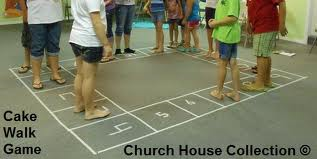
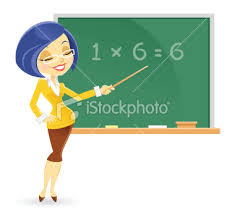
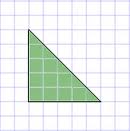
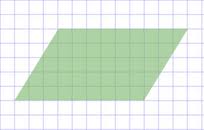
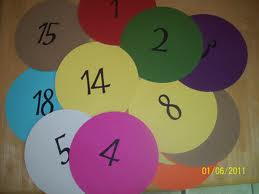

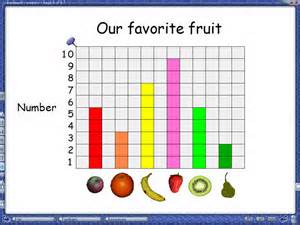
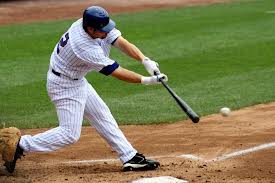

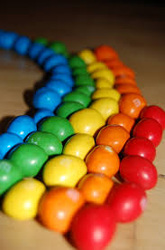
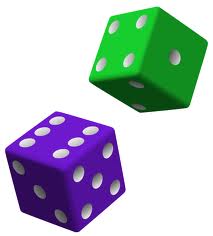
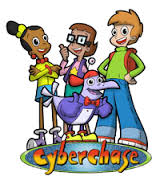
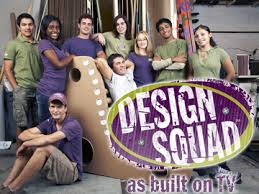
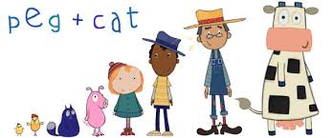
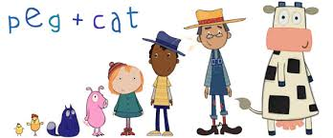
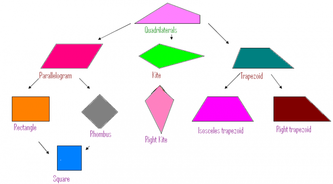

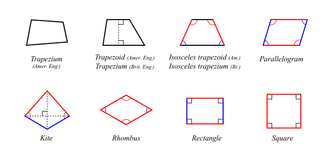
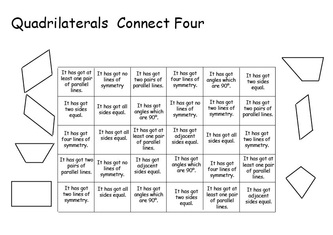
 RSS Feed
RSS Feed